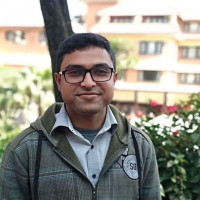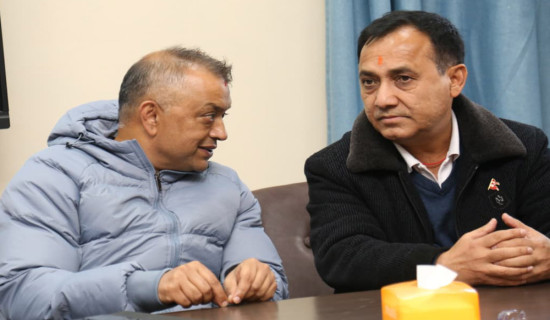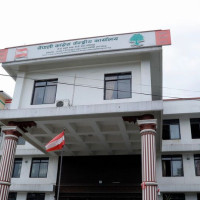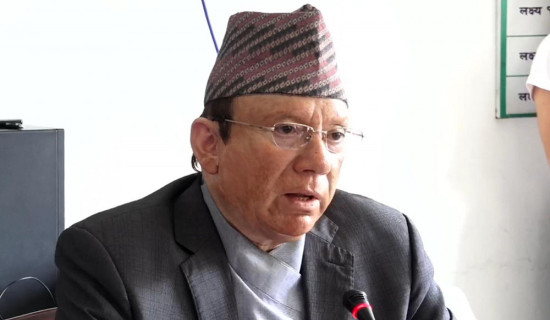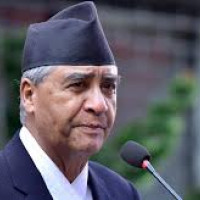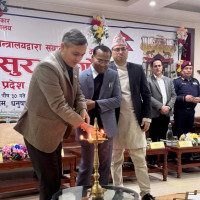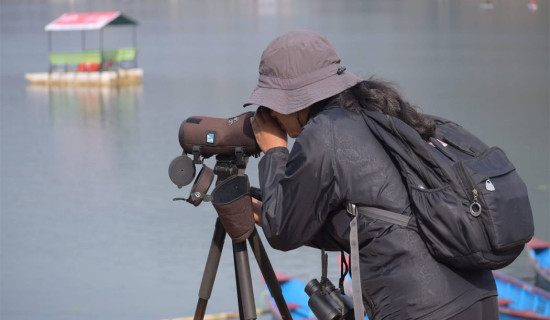- Wednesday, 14 January 2026
Paucity of Purohit affects ritual observances
Kathmandu, Jan. 28: On January 23, 2018, Diwakar Sharma’s father passed away in his home at Tinkune, Kathmandu of old age. This Monday was the fifth anniversary of his passing and, as a Hindu, Sharma needed to perform a Shraddha rite. He and his two brothers arranged all the materials necessary but could not manage the most important thing – a priest.
“It was an ordeal,” he shared. “One would think a priest would be easy to find but no! It was the hardest thing to manage, at least in Kathmandu.”
Sharma’s family priest was busy that day, as was his apprentice. Two people recommended by his father-in-law also had other engagements. In the end, he found a priest through Facebook.
Siri Magar also faced a similar situation when she lit 100,000 wicks (Laakhbatti) at the Devi Temple near her home in Tikathali, Lalitpur on Thursday. “I could not find a priest to officiate the ceremony,” she complained. “In the end, I had to request a Purohit friend to cancel a prior engagement for me.”
In addition to Sharma and Magar, The Rising Nepal also talked to two couples who got married this week. They did not wish to be named for privacy reasons but they said that they too had to carry out extensive searches to find a qualified priest to perform the rituals.
These are not a few isolated incidents. There is a genuine shortage of Purohits, said Madhav Chalise, who is a Hindu priest Purohit, himself. “The demand has exceeded the supply,” he said, claiming that it was because the new generation was not interested in priesthood.
Chalise said that today’s youths did not wish to learn Sanskrit or study scriptures “which is a shame because there is no money to be made here.” He shared that a skilled priest able to satisfy his Jajamans (clients) would be able to earn as much as a middle-class government officer. “This is in addition to material items like clothes, utensils, fruits, legumes and food grains priests regularly receive,” he said, urging young people to take up the “profession”.
Priest Sandesh Bhatta also agreed that more youngsters needed to enter the field but did not think that was what was behind the present scarcity. “The present situation is due to Kathmandu’s rapidly growing population,” he believed.
In his opinion, immigration into the capital has broken the traditional Purohit-Jajaman connections of the villages while overwhelming the priests of Kathmandu. “People coming to Kathmandu Valley seek out new priests here while the priests their families have maintained for generations are left without work in their native communities.”
Bhatta stressed that the present situation was more of a priest imbalance than a priest shortage.
Meanwhile, Purohit Narayan Subedi held a different view. He thought that the present priest shortage was due to the exclusionary nature of the practice. “Why are only male Brahmans allowed to be priests?” he questioned. “Our society should permit women with the required religious knowledge and abilities to become priests too.”
Furthermore, Chalise, Bhatta and Subedi, in addition to several other priests this daily talked to, called for the establishment of a national body to regulate and supervise priesthood in Nepal. Currently, several groups and societies exist for this purpose but they are regional and/or limited in their reach and authority.


